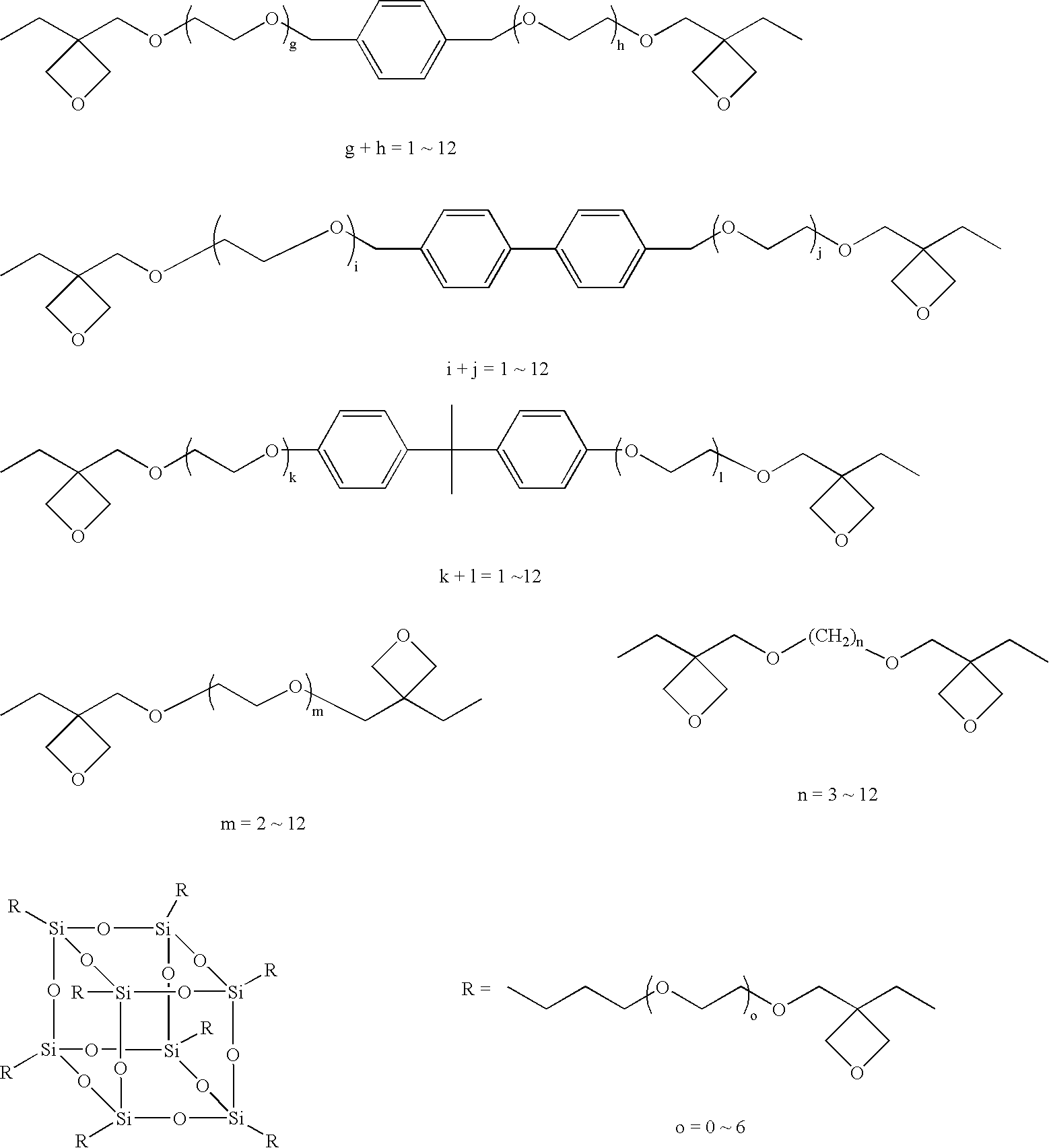Cationically curable composition for dental use
a composition and cation technology, applied in the field of dental materials, can solve the problems of difficult to obtain difficulty in obtaining a favorable aesthetic appearance, and difficulty in obtaining oxygen from being polymerized, so as to achieve excellent aesthetic appearance and not cause a large burden on the patien
- Summary
- Abstract
- Description
- Claims
- Application Information
AI Technical Summary
Benefits of technology
Problems solved by technology
Method used
Image
Examples
example 1
[0571]An oxetane compound (OX-1) and an epoxy compound (EP-1) were blended being so adjusted that the amount of (EP-1) was 0.111 mols per mol of (OX-1) in an environment of a relative humidity of not higher than 20%. In this case, (OX-1) was a bifunctional oxetane compound and, hence, “a” was 2 while (EP-1) was a bifunctional epoxy compound and, hence, “b” was 2, establishing a relationship,
(a×A):(b×B)=(2×1):(2×0.111)=90:10
[0572]To 100 parts by mass of the mixture of the above polymerizable monomers, there were added 0.1 part by mass of a photo acid generator (IMDPI), 0.03 parts by mass of a condensed polycyclic aromatic compound (DMBAn) and 0.03 parts by mass of camphorquinone (CQ) as polymerization initiators in a dark place. The mixture was stirred and dissolved until it became homogeneous thereby to prepare a curable composition.
[0573]The curable composition was evaluated for the curing time, the surface state of the cured product, and the coefficient of contraction by polymeriz...
example 5
[0577]A curable composition was prepared in the same manner as in Example 1 but using 0.1 part by mass of the photo acid generator (IMDPI), 0.03 parts by mass of camphorquinone (CQ), and 0.03 parts by mass of ethyl 4-dimethylaminobenzoate (DMBE) as polymerization initiators, and was evaluated for its properties. The results were as shown in Table 2.
example 9
[0582]20 Grams of a mixture of spherical silica-zirconia (particle size of 0.5 μm) and spherical silica-titania (particle size of 0.1 μm) at a weight ratio of 7:3 was suspended in 80 ml of hydrochloric acid adjusted to pH of 4.0, and to which was added 1.2 g of 3-glycidyloxypropyltrimethoxysilane (silane coupling agent) with stirring. After stirred for one hour, water was distilled off by using an evaporator, and the obtained solid Was milled in a mortar and dried under a reduced pressure at 80° C. for 15 hours. After drying, the obtained powder was preserved as an inorganic filler (a) in a desiccator using silica gel as a drying agent.
[0583]On the other hand, like in Example 1, the oxetane compound (OX-1) and the epoxy compound (EP-1) were mixed together such that (a×A):(b:B)=90:10. To 100 parts by mass of the above mixture, there were added 0.1 part by mass of a photo acid generator (IMDPI), 0.03 parts by weight of a condensed polycyclic aromatic compound (DMBAn) and 0.03 parts by...
PUM
| Property | Measurement | Unit |
|---|---|---|
| molar ratio | aaaaa | aaaaa |
| particle size | aaaaa | aaaaa |
| refractive index | aaaaa | aaaaa |
Abstract
Description
Claims
Application Information
 Login to View More
Login to View More - R&D
- Intellectual Property
- Life Sciences
- Materials
- Tech Scout
- Unparalleled Data Quality
- Higher Quality Content
- 60% Fewer Hallucinations
Browse by: Latest US Patents, China's latest patents, Technical Efficacy Thesaurus, Application Domain, Technology Topic, Popular Technical Reports.
© 2025 PatSnap. All rights reserved.Legal|Privacy policy|Modern Slavery Act Transparency Statement|Sitemap|About US| Contact US: help@patsnap.com



